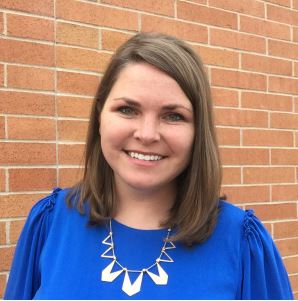Four Steps to healing
academic wounding
that every parent
should know
Out of the corner of my eye, I could see her tiny frame shrinking. She looked down and twirled her pencil in both hands, downcast. We had been working on fractions for some time. A frustrated expression spread across her face as she disengaged from solving the problem, detachment. I was witnessing the residual impact of academic wounding.
Maya* didn’t have to utter the words. Without any syllables, I could feel the message, with eyes glazed over. “I’m dumb. There’s no point. I’ll never be good at math.”
Slowly I turned my gaze to her and not the problem in front of us. Our eyes connected, and I shared with her my frustrating experience with math. She smirked at my story as if to convey, “Yeah, that won’t ever be me.”
Right then, I knew Maya had been hurt. She had internalized an assumption she would never be good at math.
She was academically wounded. When I burn my hand, I can see the wound; the pain is evident, and I immediately leap into action! No time wasted on the path to recovery. I have a cold bag of flour waiting in my freezer to bring relief and pull the stinging sensation out of the burn.
But other wounds like internal bleeding are harder to locate. Sometimes symptoms take weeks to surface before a doctor can identify the source and prescribe the necessary treatment.
Related: Math Anxiety
The wound Maya received is cumbersome to identify as its symptoms are not apparent and can take years to develop. It lies deep inside of the mind and can be particularly difficult to find as this wound doesn’t care what race, ethnicity, gender, or socioeconomic background you have.Knowing what it looks like will help you find and heal the wound. Welcome to academic wounding.
What is Academic Wounding?
It took a few weeks of observing Maya before realizing we were dealing with a more significant issue. She was deeply hurt, and I knew we needed to get some of those feelings out into the open. After years of trying to be good at math, she had failed too many times to count.
David Berg provides insight into how academic wounding proves to be dangerous,
“Frequently, these students do not know if their solutions are right or wrong. (As a result), they cannot trust their own mathematical problem-solving ability. This horrible feeling and experience, if not addressed appropriately, may lead to academic wounding. Academic wounding is the internalization of the personally based myth of the pre-conception of failure: “I hate math,” “Math is boring,” “I’m dumb, I’m stupid. I’ll never be good at math.” Academic wounding can affect all students, with or without learning disabilities. Moreover, if not appropriately addressed, academic wounding may persist indefinitely into adulthood until such time as the individual repeatedly experiences authentic and indisputable success.”
Academic wounding looks like…arms not working.My youngest son often finds his limbs don’t work when math gets challenging. What may seem like pouting about math is a sign a wound inside is present. He may be distracted and spending mountains of time avoiding math because it hurts too much to do the work. My son telling me his arms don’t work is a cry for help, not him asking for a swift kick in the pants (even though my gut feeling tells me to follow through with the kick) :)It is his way of saying, “I have tried. I am doing the best I can, and yet this still isn’t working.” As Math Specialists, we also play the therapist’s role as I know emotion plays a prominent role in student success.
Want to listen to this story? Click HERE. FYI, it’s a google drive file
Maya had experienced over 3 years of frustration with math despite all her effort at home. It wasn’t for lack of trying. Instead, she feels hopeless, and mom is scrambling for solutions.
Academic wounding feels like…shame.When you are academically wounded, you feel you are flawed. Something inside of you must be off because you don’t get it. These feelings can fester to create shame which does not help you move forward but continues to pull you away because of discomfort. It’s natural to want to run the other way from a math problem that feels out to get you. Your brain is wired to run from pain. The thought of being rejected one more time by a math problem hurts too much. Your cheeks burn with embarrassment as you think about stammering through the steps you can’t seem to remember. To protect yourself, you disconnect.
How to heal from academic woundingFailure is part of life. What is important is knowing how to bounce back from failure. The following steps are a great starting point for academic wound recovery:
1 – Build Rapport
According to David Berg, our relationship with our child is critical:
“establishing genuine Rapport is essential because [your child] need[s] to feel they have nothing to prove, they are fine the way they are: there is nothing broken that requires fixing, and they have the intelligence to be successful.”
Building rapport with your child requires you to be vulnerable. Share your stories of shame. Your child didn’t see how you have developed into the adult you’ve become. Reflect back on how you handled failure and possibly how you did not handle it well. For example, ponder these questions:
(A) How did you bounce back from a failed test?
(B) How do you keep moving forward when it got hard?
2 – Journal
To open the lines of communication with Maya, I chose to start a math journal. At the beginning of our math sessions, I would give her a prompt to write separately in a journal. I also set the timer for 5 minutes as many of my students don’t like writing either.
I asked Maya this leading question: “Tell me about a time when you knew you weren’t good at math.”Before I could even set the timer, Maya’s pencil fervently scribbled in her journal. She knew the exact moment.In third grade, her class was working on memorizing math facts. So the teacher implemented a program where students earned a scoop of ice cream for each math fact family memorized. Then, at the end of the year, a party, to reward the students with ice cream!
Maya only earned three scoops, while most of her class had all 12.
The wound cut deep.She spent hours practicing with flashcards and playing games with her mom, but the facts would not stick. But, in her words, “that’s when I knew.” My heart sunk as I heard her story. I know the same program she referenced. The program was not meant to hurt but rather inspire students to work hard. No teacher knowingly would do this to their student. I immediately shared my story. We were vulnerable together.
3 – Practice Empathy
Rapport requires you to have Empathy. After journaling, feel the pain with your child.
Don’t try to fix it.Avoid the temptation to march into the classroom and give her teacher a piece of your mind.Please don’t paint the silver lining to her story with comments such as,“Look on the bright side Maya, you are a great writer. You’ll always have that gift. Not everyone is good at math.”This bright side minimizes her feelings. But, unfortunately, instead of making her feel better, her shame may deepen. Brene Brown sheds light on why we need to practice more Empathy and not sympathy in this case.
4 – Successful Math Experiences
We can’t continue to do more of the same math and expect different results. Your child needs a different approach. We may be biased, but they may need a clutter-free and compassionate approach. Find out more HERE.
Math can feel too abstract and not applicable, but math has real-life applications. Show your child the connection between math and real life. For example, get them involved with baking or building something with their hands.Invest in a math specialist with multisensory math training.
These Specialists know how to make math real, tangible, and fun for your child.
Going back to the basics and helping your child find success in one area will be essential.Ask your child, “What is one math fact family you wished you knew? Which one always pesters you during math problems?”Next, pull out everyday objects to practice this set of math facts. For example, if your child is bothered by the 7 times tables, work on mastering just the 7’s.Pull out some LEGO bricks and make towers of seven in one color.
- Show me what 2 groups of 7 are with LEGO bricks. 14
- If that’s 2 groups of 7, what are 3 groups of 7? 21
- If that’s 3 groups of 7, what are 4 groups of 7?
Related: How CEO Alex Charfen helped his kids learn to love math. Click HERE.
Continue to work until you see your child building and breaking apart the groups of 7 to make the math facts with ease. Then, don’t wait to teach division.
- Show me 21 divided by 7. 3 groups
- What is 21 divided by 3? 7 groups
Finally, work in some fractions.Show me 1/7 of 14. 2 groups.Involving the senses will help your child build new connections and find success in math.
Related: Roadside Assistance
Your call to heal the woundedOpening the dialog with Maya was the first step to success. A few weeks later, I saw her writing happily in her math journal in the corner of my eye. Her face was soft and relaxed. My heart rejoiced when I heard her read her entry aloud, “When I got my test back from my teacher, I freaked! This was the highest math score I have ever gotten. 85%”It feels risky to talk openly with your child about her math struggles as it may bring back your own feelings of inadequacy. But the rewards are worth it. So if you’d like our help to start having successful math experiences with your child, let’s get on the path to healing.
*Name changed to protect this student’s identity

Adrianne Meldrum
CEO
is the Founder and CEO of MFM. She is a certified teacher with over a decade of experience tutoring middle and high school students in math. Adrianne’s goal is to bring multisensory math to as many students as possible.
